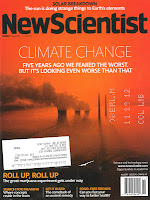Zhang F., A. Zimmerman, D. A. Nichols, Y. Chen, G. Lovelace, K. D. Matthews, R. Owen, and K. S. Thorne. 2012. Visualizing spacetime curvature via frame-drag vortexes and tidal tendexes. II. Stationary black holes. Physical Review D 86:084049. [access for subscribers, provided by the library]
Here is just one sentence from the abstract, to draw you into this particular spin: "We also explore how the tendex and vortex lines change as the spin of a black hole is increased, and we find, for example, that as a black hole is spun up through a dimensionless spin a/M=√3/2, the horizon tendicity at its poles changes sign, and an observer hovering or falling inward there switches from being stretched radially to being squeezed."
I would only observe that neither radial stretching nor squeezing sounds particularly desirable, in the context of falling inward to a black hole. Learn more: Black holes in higher dimensions / edited by Gary T. Horowitz. Cambridge Univ Press, 2012.




